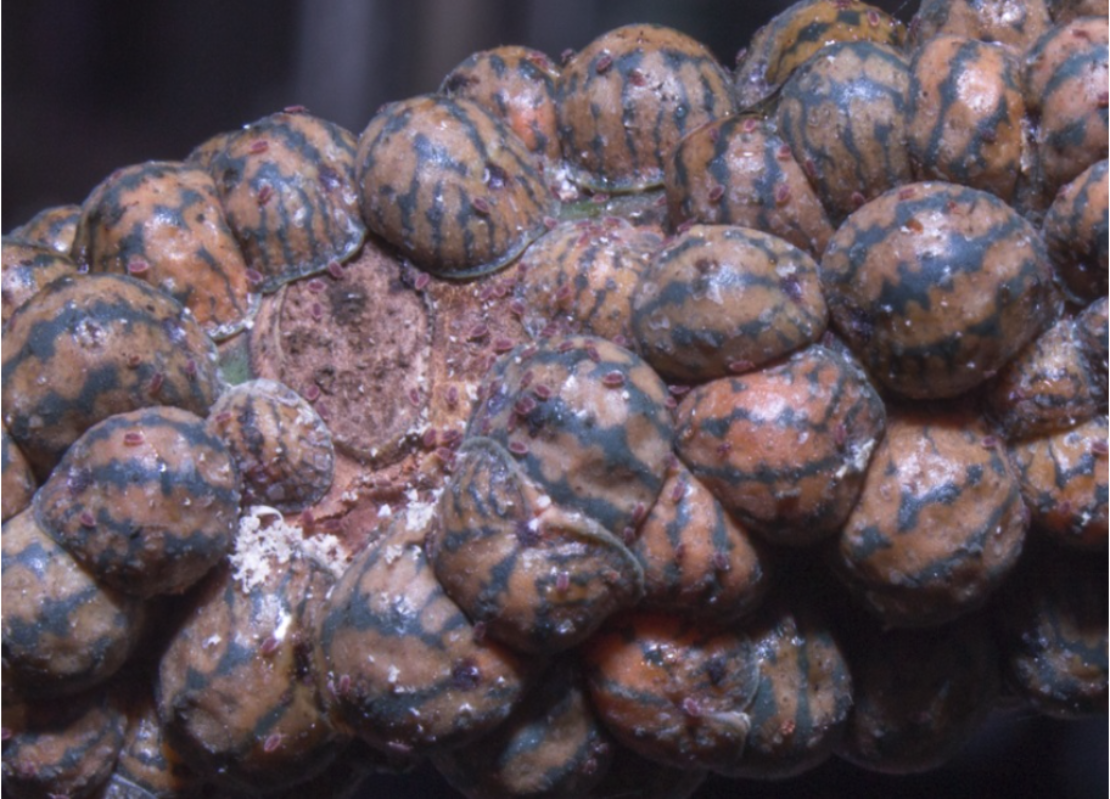The City of Long Beach has a magnolia tree problem and the solutions could be costly, time-consuming and still may not save the tree that dominates the city’s streets.
There are more than 7,000 magnolias in the city, and city officials have estimated that more than 1,000 of them have been infested with Tulip Tree Scales, a type of insect that feeds on the tree’s sap, which can ultimately lead to the tree’s destruction.
The City Council voted Tuesday night for the city manager’s office to bring back a presentation within 90 days on possible remedies to the infestations, including cost estimates for treating or replanting affected trees and cleaning up the mess left over from the scales that are sucking the trees dry.
A 2016 tree audit by the city put the value of Long Beach trees at about $112 million, but noted that a combination of drought and lack of maintenance had put a number of trees at risk. That audit did not account for a massive infestation by the Tulip Tree Scale.

Infested trees exhibit a number of symptoms with one of the more prominent signs being a black fungus that covers the tree’s limbs and a sticky substance covering the leaves, ground and unfortunate cars that happen to be parked underneath. Experts say the fungus is not actually bad for the trees but the sticky substance is a byproduct created by insects feeding off the tree’s sap and then excreting a “honeydew” onto the tree which can reduce its ability to photosynthesize.
The Tulip Tree Scale is predominantly a problem in the eastern United States, particularly Michigan, New York and Florida. They impact 19 states in the country with Texas and California being the only states west of the Mississippi River having reported infestations from the insects. California has reports of the scales dating back about 40 years while the Long Beach infestation is believed to have originated in 2016.
Don Hodel, an emeritus environmental and landscape horticulture advisor with the University of California, co-authored a report in 2018 that focused on outbreaks on the USC campus and in Long Beach.
While the insects have existed in the state for decades their infestation levels have had peaks and valleys. Hodel said that in the past five years the state has seen a spike in activity and now cities from Santa Barbara to Orange County have been noticing scale infestations.
Hodel said the scales were first detected in Long Beach on a tree on the 500 block of 3rd Street but has since migrated 30 blocks inland. While the adult scales permanently attach themselves to host trees and remain there until the tree or they die, their offspring are spread by the wind.
Map by Dennis Dean using data obtained by Matt Stiles at the Los Angeles Times. View larger map.
“Because the winds from Long Beach come from the West, where it started on the second or third block in from Ocean in downtown, you can now find it 30 blocks inland after one or two years,” Hodell said. “Wherever the wind goes, this pest goes.”
Hodel and Jorge Ochoa, an associate professor of horticulture at Long Beach City College, agree that there are steps that homeowners and the city can take to help prolong the life of the trees and possibly even save them. But it’s going to take work and time and water.
“Any kind of stress factor like drought is going to lower the immune system of a plant,” Ochoa said. “It’s natural defenses are not active, which creates more stress and compounds the problem.”
Ochoa believes that the current infestation that is impacting Long Beach magnolias probably arrived eight to 10 years ago but have just recently expanded to a large-scale issue.
He said that homeowners can take simple steps such as watering the magnolias more often or fertilizing or placing other organic matter around the base to help offset any nutrient shortages. Ochoa said that even covering the soil around the base during the summer months to keep it cool can have positive impacts on the already compromised trees.
“Anything the homeowners can do to alleviate the stress can help the trees rebound,” Ochoa said. “You have to remember, these insects are feeding 24 hours per day.”
Hodel’s 2018 report notes that insecticidal oils, “natural enemies” including moths, wasps and fungi and chemical sprays can be used in combination to treat the magnolias.

USC’s magnolias were treated with a combination of chemical trunk and soil treatments which took about two years to achieve significant progress. Hodel’s report noted that Long Beach was looking at a similar approach to combating its equally severe but more widespread infestation.
Hodel said there is no baseline study for the survival rate of magnolias impacted by Tulip Tree Scales. The younger trees are often the ones that die as a result of the infestation but older ones, left untreated, can also perish.
“It doesn’t look good for magnolia trees,” Hodel said. “I think a lot of them will die. I’m a tree lover and magnolias are one of my all-time favorite trees, but I really do believe it’s becoming an inappropriate tree for Southern California because of the water situation and the drought.”

